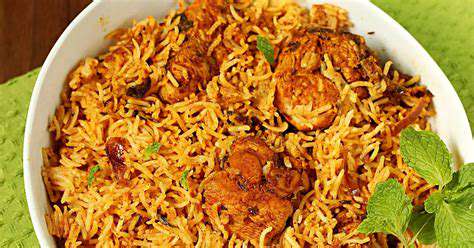Discovering Indian Vegetarian Dishes: Flavorful Curries

A Culinary Journey Through Taste
Indian vegetarian cuisine offers a vibrant mosaic of flavors that captivates the senses and tells stories of cultural heritage through every bite. Each region's unique spice blends and cooking techniques create distinct flavor profiles that have evolved over centuries. What makes this cuisine truly special is how simple ingredients transform into complex dishes through skilled preparation.
The true magic lies in how Indian cooks balance six essential tastes - sweet, sour, salty, bitter, pungent, and astringent - in every meal. This harmony of flavors reflects ancient Ayurvedic principles that consider food as medicine. When you taste a well-prepared Indian vegetarian dish, you're experiencing generations of culinary wisdom passed down through families.
The Art of Presentation and Pairing
Traditional Indian thali presentation demonstrates the cuisine's artistic side, with carefully arranged colorful dishes in specific positions on a round platter. The vibrant yellow of turmeric-laced dal contrasts beautifully with the deep red of chili-based chutneys, while fresh green herbs provide visual punctuation.
Regional variations in plating styles reveal cultural values - from the elaborate banana leaf presentations of South India to the practical stainless steel thalis of North India. The visual appeal complements the aromatic experience, as steam rises from hot dishes next to cool raita.
Beverage pairings showcase regional specialties - masala chai in the north, filter coffee in the south, or the cooling jaljeera drink in central India. Each complements local flavor profiles perfectly, demonstrating thoughtful culinary design.
The Importance of Fresh Ingredients and Seasonality
Seasonal availability dictates traditional Indian vegetarian menus more than any fixed recipe. Monsoon specialties differ from winter harvest dishes, ensuring optimal nutrition throughout the year. Local markets brim with just-picked produce that forms the foundation of authentic home cooking.
The distinctive taste of vegetables harvested at peak season becomes the star of simple preparations. Monsoon-grown greens develop deeper flavors, while winter root vegetables offer natural sweetness. This connection to the land's rhythms creates dishes that change subtly throughout the year.
Traditional preservation techniques like sun-drying, pickling, and fermenting extend seasonal bounty while adding complex flavor dimensions. Aam papad (mango leather) and salted lemon pickles demonstrate ingenious methods to enjoy summer fruits year-round.
Beyond the Basics: Unveiling the Secrets of Indian Vegetarian Curries
Spice Blends: The Heart of Flavor
Every Indian kitchen maintains a distinctive spice box (masala dabba) with seven essential spices in specific proportions. The audible crackle of mustard seeds in oil signals the start of South Indian tempering, while North Indian dishes often begin with asafoetida's pungent aroma. These regional signatures create immediate sensory recognition.
Home cooks frequently adjust traditional spice blends (like sambar powder or panch phoron) based on seasonal needs - adding more ginger in monsoon for digestion, or increasing cooling coriander in summer. This adaptive approach keeps ancient recipes relevant to modern needs.
Beyond the Tomato: Exploring Diverse Vegetables
Lesser-known vegetables like bitter gourd (karela), bottle gourd (lauki), and drumsticks (moringa) feature prominently in regional specialties. Each offers unique textures and health benefits celebrated in folk medicine. Jackfruit transforms into meat-like textures in coastal curries, while banana flowers create delicate stir-fries in Eastern recipes.
The Art of Tempering: A Culinary Dance
The precise timing of adding spices to hot oil (tadka) creates flavor layers impossible to achieve otherwise. Witnessing a skilled cook perform this step reveals the technique's importance - cumin seeds must sizzle just long enough to release aroma without burning, while curry leaves should crackle briefly before other ingredients join.
Cooking Methods: A Blend of Tradition and Technique
Traditional clay pots (handis) impart earthy flavors during slow cooking, while iron skillets add beneficial minerals to leafy preparations. The pressure cooker revolutionized dal preparation while maintaining nutritional value, demonstrating how technology integrates with tradition.
The Role of Yogurt and Cream: Enhancing Creamy Textures
Regional variations abound - Kashmiri dishes use yogurt as a souring agent, Gujarati cuisine balances it with jaggery, while Punjabi cooking employs fresh cream for richness. Each approach reflects local agricultural practices and climate considerations.
Serving Suggestions: Elevating the Culinary Experience
The choice of accompaniments creates complete nutritional profiles - rice provides carbohydrates, dals offer protein, vegetables supply vitamins, and pickles aid digestion. This holistic approach to meal planning ensures balanced nourishment with every combination. The thoughtful architecture of an Indian thali mirrors sophisticated culinary principles found in global cuisines.
A Culinary Adventure: Exploring Regional Variations

A Journey Through Flavors
Tracing spice routes through Indian vegetarian cuisine reveals fascinating histories - black pepper from Kerala's Malabar coast, cardamom from Western Ghats plantations, and saffron from Kashmir's high valleys. These ingredients shaped global trade for centuries and continue defining regional identities.
The Role of Ingredients
Microclimates create astonishing diversity - mango varieties taste distinctly different across regions, while the same vegetable develops unique characteristics based on local soil. Konkan kokum, Bengal's mustard, and Rajasthan's ker sangri demonstrate how ingredients adapt to their environments.
Regional Culinary Traditions
Festival foods offer windows into cultural values - Pongal's sweet rice celebrates harvest in Tamil Nadu, while Sankranti's tilgul reinforces Maharashtra's community bonds. These edible traditions preserve intangible heritage through generations.
Techniques and Skills
Specialized tools like stone grinders for chutneys, wooden presses for idlis, and iron tawas for rotis demonstrate how equipment evolved alongside culinary needs. Mastering these tools requires years of practice to achieve authentic results.
The Future of Culinary Exploration
Contemporary chefs reinterpret classics using molecular techniques while respecting traditional flavors. This innovative approach introduces global audiences to Indian vegetarian cuisine's depth while preserving its soul. The growing interest in plant-based diets worldwide positions these ancient culinary traditions as relevant solutions for modern dietary challenges.
- Storing Potatoes: Prevent Sprouting
- Discovering Brazilian Feijoada: A Hearty Stew
- Vegetarian Meal Prep Bowls: Easy and Nutritious
- Pantry Organization Hacks: Declutter Your Kitchen
- One Pot Pasta Recipes: Weeknight Dinners Made Easy
- How to Choose the Freshest Seafood at Your Market
- Exploring Vietnamese Cuisine: Flavorful Soups and Noodles
- Cooking with Spices: A Beginner's Flavor Guide
- Kitchen Organization for Small Spaces: Maximizing Every Inch
- Dairy Free Desserts: Creamy Vegan Ice Cream Recipe
- How to Store Eggs for Maximum Freshness
- Gluten Free Baking Tips: Success Every Time